|
Mi Primer Cinco de Mayo: An Account
By Naomi Klimaszewska — Wednesday, May 19th, 2010
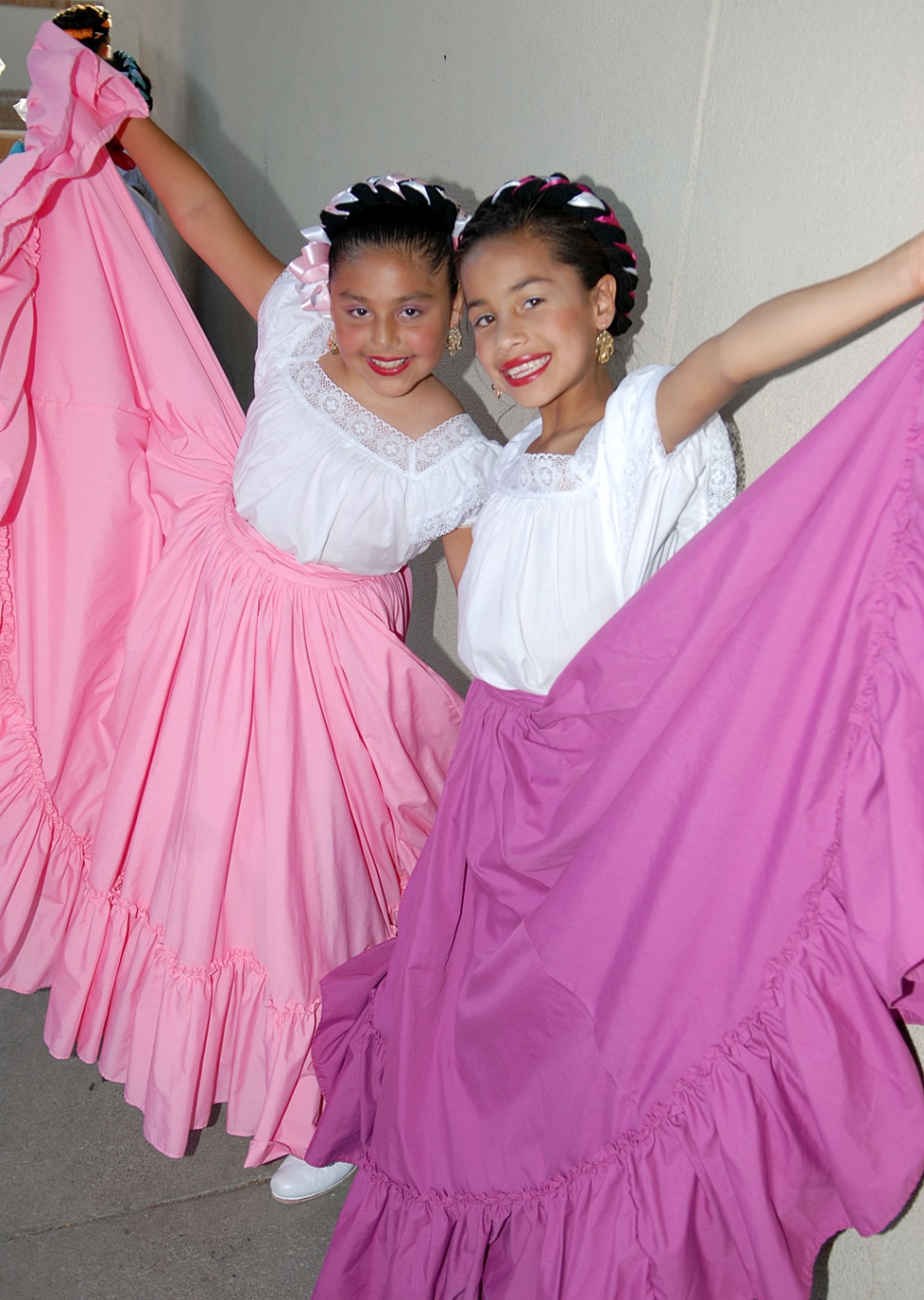 Folklorico - A Cinco de Mayo fiesta was held at Sespe School on May 5th. One of the many attractions was Grupo folklórico de San Francisco de Asís. The pavilion was decorated with drinking-straw-spaced green, white, and red pinwheels, the brown columns studded with pinwheel rosettes. Paper chain garlands of green, white, and red scalloped the guardrails along the stage area, which featured an azure poncho flanked by two modest black sombreros. Tissue rosettes dotted the ramp railing, and near the flagpole stood a display of ponchos and clay vessels, next to which two six-pointed Disney piñatas. Traditional Mexican food was served and everyone enjoyed the fiesta. 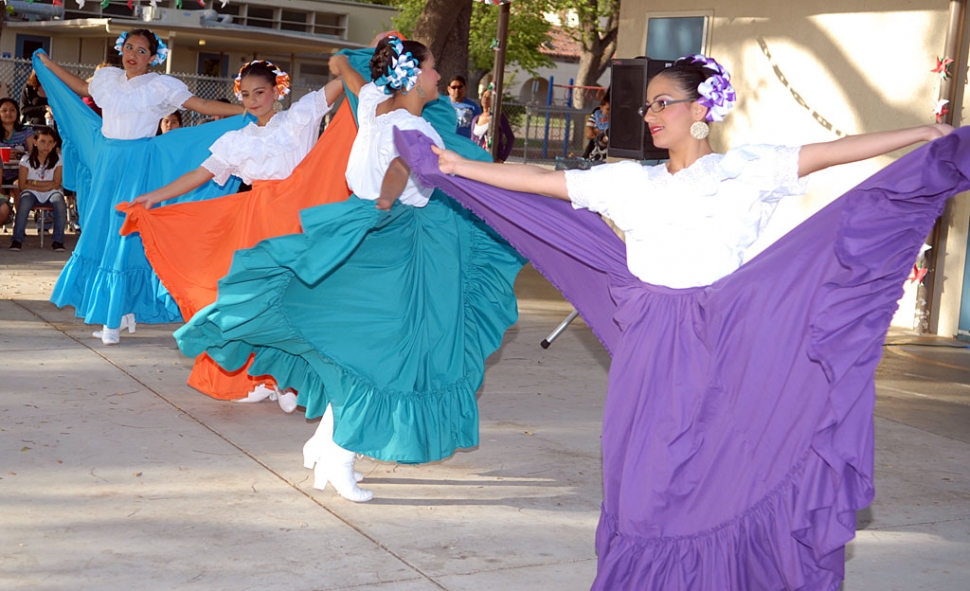 Shown (l-r) are Alissa Hernandez, 14, Erika Olveras, 13, Leslie Galvan, 13, and Cecilia Olveras, 16. 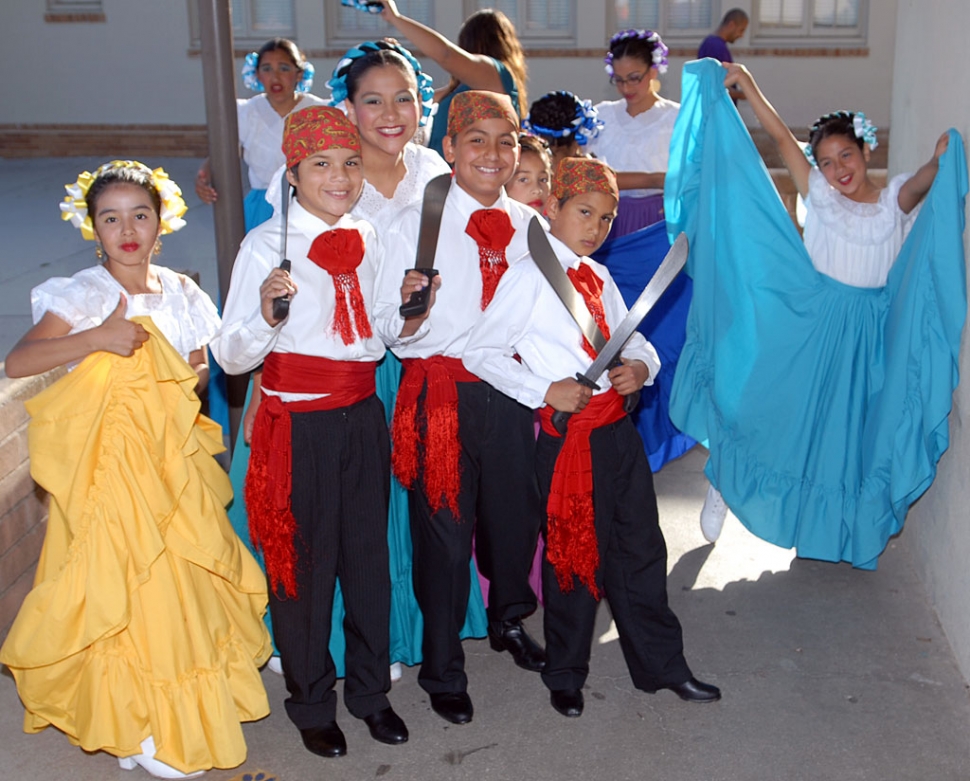 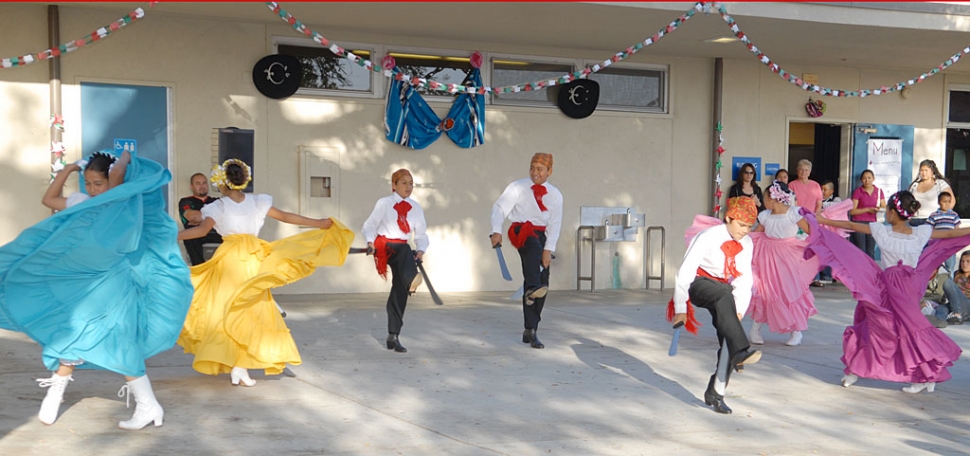 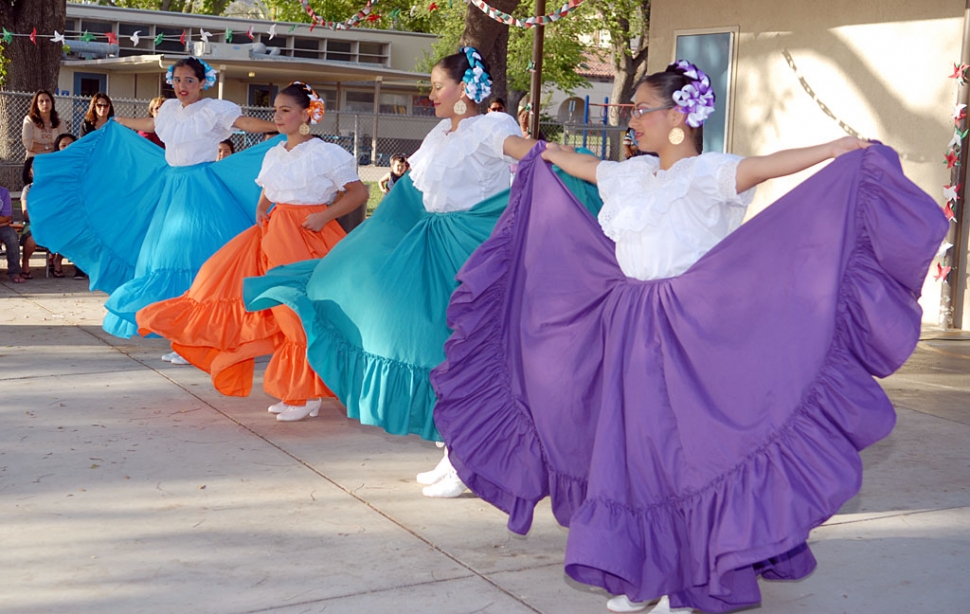 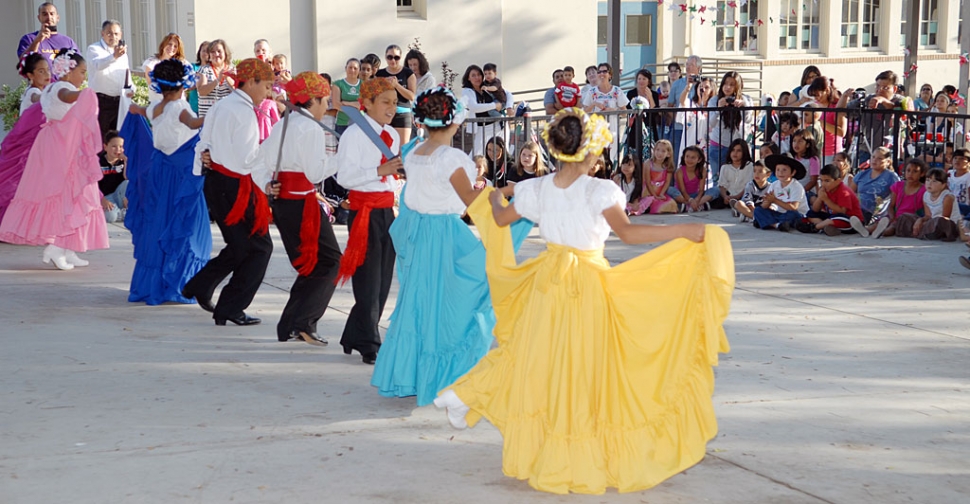 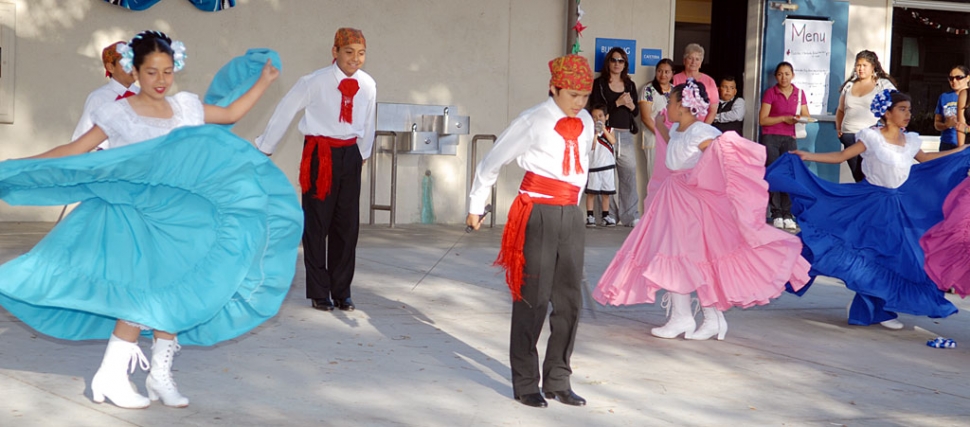 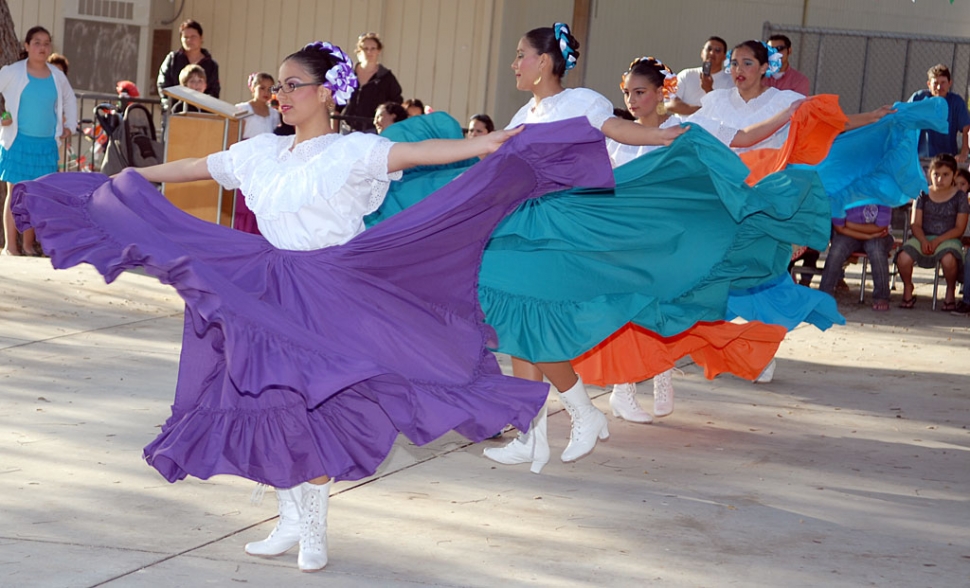 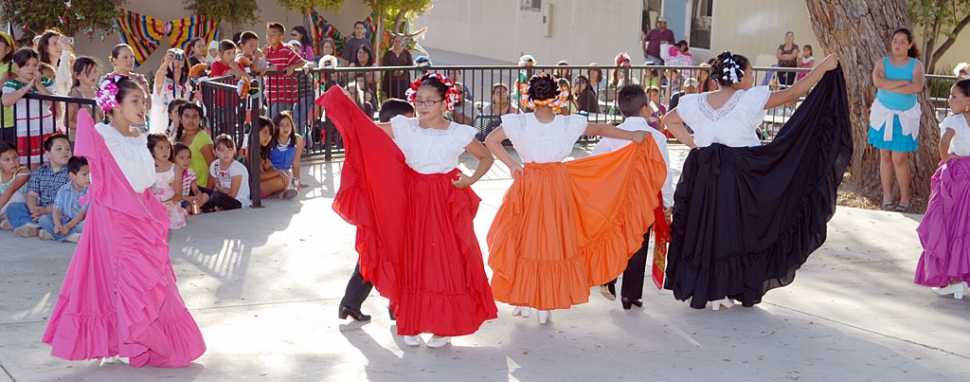 My first encounter with Cinco de Mayo was the fiesta held at Sespe School the evening of May 5. Considering my enthusiasm to attend, it was funny to find that I had forgotten something as I approached the school grounds—I am not the biggest fan of mariachi music. Apprehension notwithstanding, I soldiered on into the sound waves, determined to take an openhearted look at a celebration that I imagined would be as foreign to me as it was familiar to perhaps the majority in attendance. Families gathered beneath the large tree in the quad and at the pavilion; people emerged from the cafeteria with plates of tamales and tostadas, their red plastic cups peppering the festive scene. The pavilion was festooned with drinking-straw-spaced green, white, and red pinwheels happily spinning in the breeze, the brown columns studded with pinwheel rosettes. Paper chain garlands of—surprise—green, white, and red scalloped the guardrails along the stage area, which featured an azure poncho flanked by two modest black sombreros. Tissue rosettes dotted the ramp railing, and near the flagpole stood a display of ponchos and clay vessels, next to which two six-pointed Disney piñatas awaited their gory fates. An abundance of schoolchildren darted around the tables, noisily chasing each other and starting a pickup Frisbee game in the back. Several girls and ladies wore flounced blouses, skirts, and dresses; ribbons adorned several hairdos, and a red plastic flower stuck out of one ponytail. Some botas vaqueros and a Mexican futbol jersey were in attendance, and much to my satisfaction, I spied a giant woven sombrero floating somewhere beneath the giant tree. And above all the mayhem, the mariachi music cheerily blasted from the lone loudspeaker that pointed, it seemed, directly at me. Over a hundred people had congregated when principal Rosemarie Hibler, garbed in vestido folklórico—a loose white shift dress embroidered with colorful flowers—took the mic. She announced that the fiesta was the school’s first, sponsored by English Learner Advisory Committee volunteers. Hibler praised their efforts, duly noting, “The school’s never looked so beautiful!” Children were invited to the stage, and Ms. Esmeralda Ramirez-Rueda, a former member of Ballet Folklórico Infantil de Fillmore, led a group of about twenty girls in turns and footwork while a group of boys piled on the back of a bench to intently watch their progress. The short workshop completed, the newly minted dancers performed their routine to music, after the boys had been asked to step down for the benefit of all the audience. Ms. Ramirez-Rueda told me that she had been part of the ballet folklórico group until the group disbanded when she was twelve. As if on cue, behind us appeared a pair of costumed girls in vibrant skirts, like two agile hollyhocks in white dress shoes. Together they tapped away on the concrete, giggling in girlish fashion. Turning back, I saw a couple of large sombreros being ferried through the crowd as pulsating trumpets punctuated the Spanish chorus streaming from the stage. Mr. Jeremías Guzmán Barrera from the Mexican Consulate gave a bilingual talk on the history of Cinco de Mayo as a small team of girls held an illustrated banner reading, “Bicentenario 2010, Mexican Consulate, Oxnard.” While the noisy kids seemed largely impervious to the address, a group of students perched along the guardrail listened along with the appreciative parents and grandparents at the tables. Through the din, Guzmán noted that throughout its history, Mexico had been under the control of France, Spain, and England, and the battle celebrated on Cinco de Mayo marked the first time Mexico fought together as one. Calling the fiesta “a great family event,” Guzmán said that it’s “important [for the children] to know their roots,” and presented Principal Hibler with a calendar featuring artwork by Mexican children around the world. ELAC member Araceli Bravo told me that they were a group of Hispanic parents who advised the school regarding what they wanted for their children. To celebrate Cinco de Mayo, they contacted local businesses, found sponsors for food, invited the Mexican Consul, and recruited dancers. “It was planned in one and a half months—it was just a rush,” she said. The fiesta’s highlight was the inaugural performance of the Grupo folklórico de San Francisco de Asís. The girls I’d seen earlier took to the stage with their group, followed by los machetes—boys in bandannas, sashes, and fringed bowties, wielding their custom-made machetes with flair. A group of older girls finally graced the stage in full-costumed glory, from gold earrings to white lace-up boots. Maybe it was just the swelling music, but the rowdy kids seemed to halt their hollering as everyone’s attention turned to the performers. After the show, some of the dancers congregated in the parking lot. Sisters Erika (13) and Cecilia Olveras (16) revealed they’d been practicing for five months, and they’d been asked to perform just two Sundays before. Their cousin, Leslie Galvan (13), explained they made their braided yarn-and-ribbon hairpieces together the previous night, and their instructor took 45 minutes on each girl’s hair and makeup that day. I nodded at the boots Erika had unlaced. Comfy? Erika made a face, “If you’re dancing in them for two hours, no.” Do they feel confident about their upcoming Mothers’ Day performance? “Now that we have this one over with, yes!” Erika nodded emphatically. Matthew Galvan (11) cut in, “I’m pretty confident.” What would they do differently next time? Everyone agreed with Cecilia, “Practice more!” Seven-year-old Michael, the youngest Olvera dancer, sat quietly on a parking curb. Was he scared by his first public performance? “No…” Did he make any mistakes? “No…” Michael’s big brown eyes twinkled above his shy smile. While some girls complained of hurting feet, I noticed his brother Anthony (11) had cleverly changed into Dallas Cowboys’ slippers. I asked Matthew if he liked wearing boots—something about his roundabout response signaled to me that he just might. Instructor Liz Hernandez smiled as she piled skirts into her car trunk. “For the months we’ve been training, they did great; they’re more advanced than other kids their age,” she said. Hernandez noted that she emphasizes footwork, as the tradition that goes into dance is very important to her. The girls surrounding her chimed in, “And our hands!” “I always nag them about their hands,” she admitted. “They get tired, and they should be up here—” she lifts her hands up past her ears. “I’m very proud of them.” Hernandez, who danced as a child, continues her training at Ventura’s Bell Arts Factory and passes on what she learns to her students. She successfully began her group under the auspices of her new parish priest. “I love Fr. Barney. He’s a great supporter,” she said. By her office, Principal Hibler exclaimed she heard “the last Cinco de Mayo celebration was held when Sespe School was at the district office!” Apparently that would mean the early nineties. “We wanted the students to be proud of their culture,” she continued. “I wish I could take credit for this, but the parents really put it together.” She called out to a student returning from the fields, “Did you have fun?” “Yeah!” “Did you see the piñatas?” “Yeah!” “Did you get candy?” “Yeah!” He raised a victorious fistful of plastic baggie containing what looked like a packet of Skittles before running off to join the exodus of satisfied children satiated with candy and culture. The fiesta renewed my appreciation for hats and pinwheels and seeing families spending time together. As the evening cool set in, the ELAC volunteers began taking down the garlands while I scribbled the last of my notes at the now-empty pavilion. A line of half-costumed dancers ran across the quad, each jumping to hit a pinwheel. None quite reached them (their tired feet didn’t help, I bet). I looked up again to see a boy in a blue T-shirt admiring the pinwheel rosettes; he reached up with both hands, reluctantly removing a rosette taped to the column. He laughed with glee as he stuck two on his hands, but quieted at his mother’s command to get back to work. Twisting the pipe cleaner stem of a tissue rosette, he stood a moment longer, wistful for having to take down the decorations. Maybe I’d absorbed something with the mariachi music—I felt the same way, too. |
